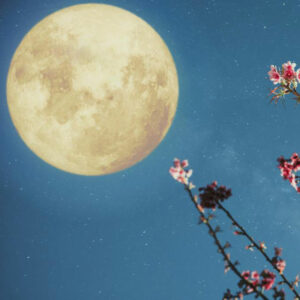Lunar Horticulture
Lunar Horticulture
Gardening by the Moon
Not planting and weeding by moonlight, but gardening using a calendar based on the monthly path of the moon around the Earth. This practice dates back to the ancient Egyptians. Without any scientifically proven benefits, but I am going to try it, even if just to feel a closer connection with nature!
The idea is that the lunar cycle affects plant growth. Tides rise and fall with the moon’s gravitational pull, therefore moisture in the soil should increase and decrease in the same way. The theory is that this effect is strongest in the ‘waxing’ phase, the two weeks before a new and a full moon.
So if we take the four main lunar phases: new moon; first quarter moon; full moon; and last quarter moon. A lunar gardener will assign garden jobs to which ever phase the moon is in. I will, therefore, sow seeds such as annual flowers, tomatoes, beans and courgettes (leafy plants that bear their crop above ground) in the soil during the waxing phase, as the seeds should absorb more water from the earth. In theory this will help my seeds to germinate and make stronger plants.
Plants that crop below the ground, such as onions, carrots and potatoes, as well as flowering bulbs (annual and perennial flowers) should be sown or planted as the moon wanes. The idea is that the decreasing light and receding water table will encourage growth of roots, tubers and bulbs.
Other horticultural tasks are best executed during specific cycles, such as pruning. Lunar gardeners have found that it was better to prune trees and shrubs in the last phase when there is less sap rising and less bleeding, and the plants’ recovery rates were quicker.
Some take this a step further with Celestial Gardening where quotidian gardening tasks are associated with certain zodiac signs. For example you should plant root crops when the moon is passing through an earth sign such as Taurus, Capricorn or Virgo.
Despite the lack of scientific evidence, lunar horticulture has been practiced for centuries by the indigenous peoples of modern day Australia, New Zealand and North America. ‘The Old Farmer’s Almanac’, first published in 1792, is still in print and sells over two million copies every year. This North American book provided calendars for lunar gardening.
Advocates of this method of gardening say that their crop yield is greater and that soft fruits taste much better. It has to be worth a try, and I shall enjoy gardening with a greater connection to nature and feeling in harmony with the metonic cycles
Candida Hopkinson
